A Complete Guide to Grok AI (xAI)
6 minutes
What happens when Elon Musk takes on OpenAI? A new AI chatbot with a personality of its own: Grok. Developed by xAI, it's designed to be witty, less censored than most other LLMs, and has real-time access to X (formerly Twitter).
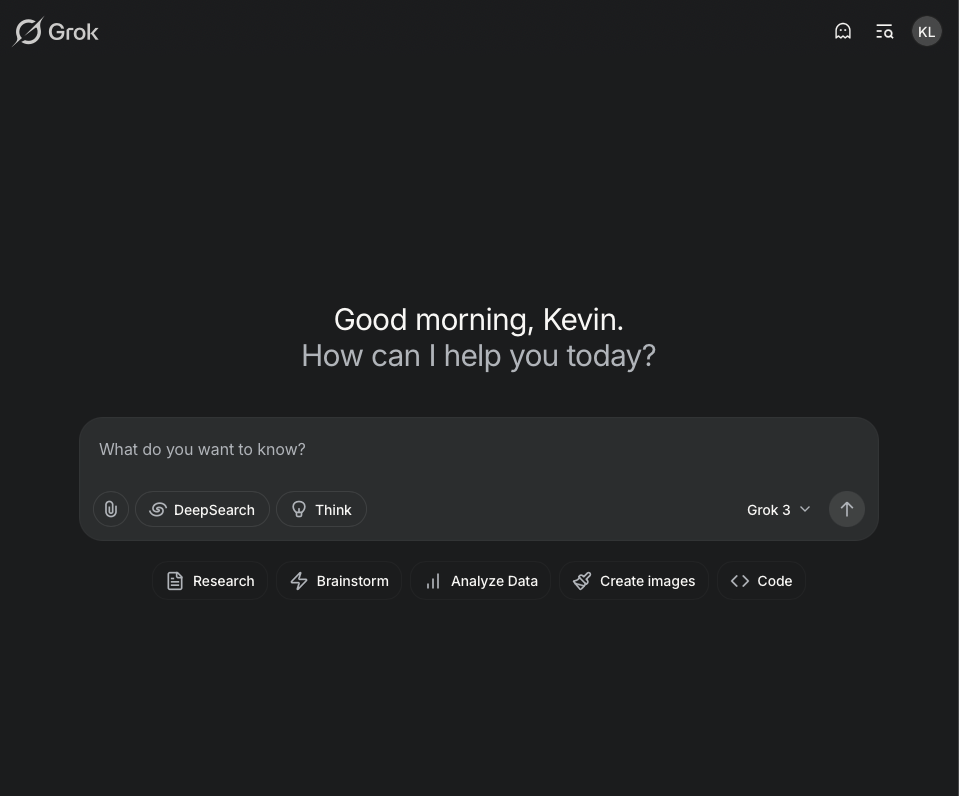
With the recent release of Grok 3, xAI claims it now outperforms popular large language models such as OpenAI's GPT-4o and Claude's 3.5 Sonnet on multiple benchmarks. But does it live up to the hype?
How to Get Started
You can access Grok through Grok.com or directly from X.
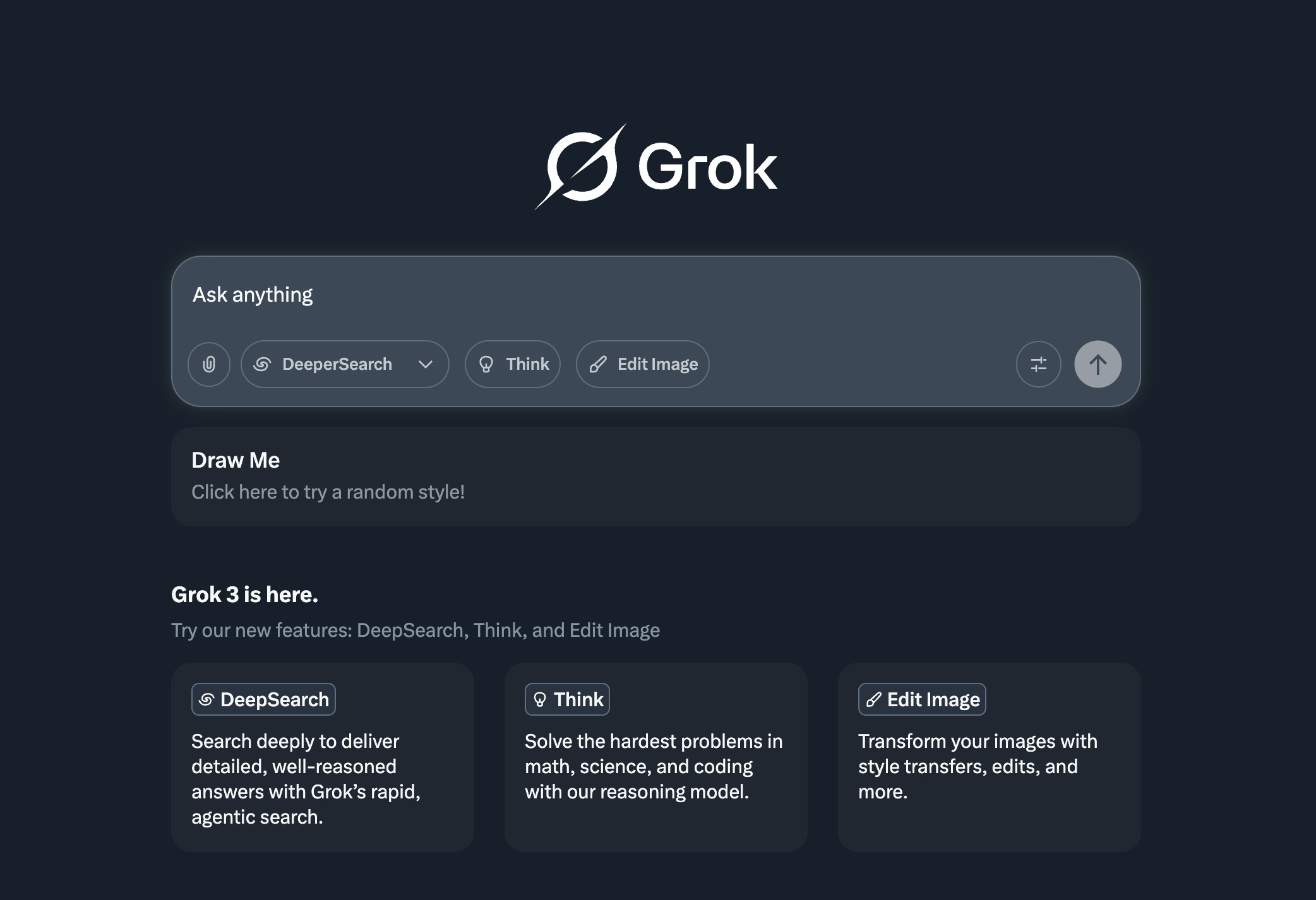
Grok has a simple chatbot interface that closely resembles most other LLMs. Here are a few toggles:
- DeepSearch: Creates a detailed report based on dozens of sources it finds on the web. (DeeperSearch for even deeper and extended results)
- Think: Enables its reasoning model, useful for problem-solving questions such as coding, maths, and science.
- Image Editing: Allows you to edit images based on text prompts.
By default, the Grok chatbot uses the Grok 3 model for all queries including standard search, DeepSearch, and Think modes.
The buttons at the bottom labeled Research, Brainstorm, and others write the beginning of the prompt for you and enable the most relevant toggles automatically.
For example, pressing the research button begins the prompt with "Research the" and activates DeepSearch.
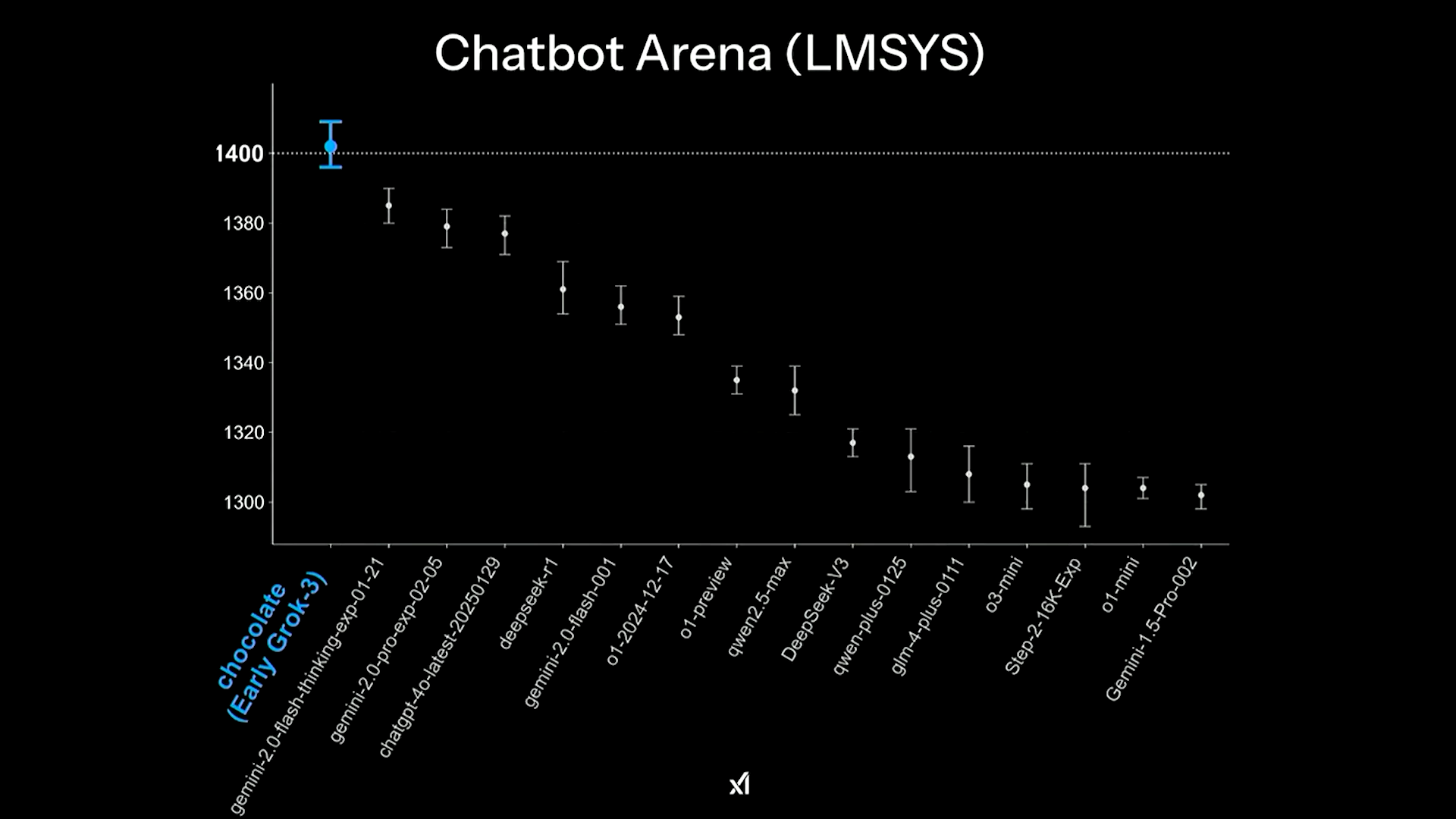
This is what happens after clicking the "research" button. DeepSearch is toggled on and Grok automatically begins the prompt with "Research the...".
Main Features & Functionality
Grok 3 is xAI's most advanced model to date, trained on 200,000 Nvidia H100 GPUs, 10× more than their previous state-of-the-art model.
Announced on February 19, 2025, Grok 3 introduces several new capabilities:
- DeepSearch: Boosts research capabilities with web access
- Think Mode: Enables advanced reasoning with multiple chains of thought
- Image Generation: Generates images based on text prompts
- Voice Mode: Allows users to communicate with the chatbot through spoken conversations
Since its launch, Grok 3 has received updates on a near-daily basis. Here are its key features:
DeepSearch Mode
Use DeepSearch when you want in-depth research rather than a quick, less thorough result. DeepSearch allows Grok 3 to access live data from both the web and X, making it suitable for getting an overview of trending discussions, newly published content, and breaking news.
How does Grok's DeepSearch stack up against the deep research tools offered by ChatGPT, Gemini, and Perplexity's Deep Research?
Demo: Best Prompting techniques
I ran the same prompt across all platforms to compare results:
Prompt
Grok DeepSearch
Grok was remarkably quick, generating a report in just 1 minute and 10 seconds with 22 sources. It listed various prompting techniques and even cited The Prompt Report by our CEO Sander Schulhoff and LearnPrompting!
However, the details felt somewhat superficial, and despite the request to focus on high-quality academic papers, many sources were non-academic.
Perplexity Deep Research with an Academic Focus
Perplexity's report was a step above Grok's, both in detail and sources used. It offered deeper insights, exploring various techniques more thoroughly than Grok.
Perplexity also exclusively used academic sources after enabling academic focus mode, ensuring credibility and reliability.
Gemini
Gemini delivered the weakest results, producing a lackluster report with minimal real insights and a mix of academic and non-academic sources.
OpenAI Deep Research
OpenAI's Deep Research was significantly better than the rest. It followed the prompt precisely, drawing from academic papers and offering insightful analysis. Instead of just listing techniques, it explored the scientific findings behind them, adding depth and credibility.
While OpenAI Deep Research might be the most thorough, it's also the most expensive with strict usage limits. As of writing, you can only use OpenAI's Deep Research 10 times per month as a Plus user ($20/month) and 120 times per month as a Pro user ($200/month).
In contrast, Grok and Perplexity both offer free users access to a limited number of DeepSearch/Deep Research queries per day.
Think Mode
Think mode is ideal for problem-solving prompts involving coding, mathematics, and science. Similar to OpenAI's o1 and o3, DeepSeek R1, Gemini 2.0 Flash thinking, and Claude 3.7 Sonnet's extended thinking mode, it automatically generates intermediate reasoning steps before providing an answer.
Benchmarks
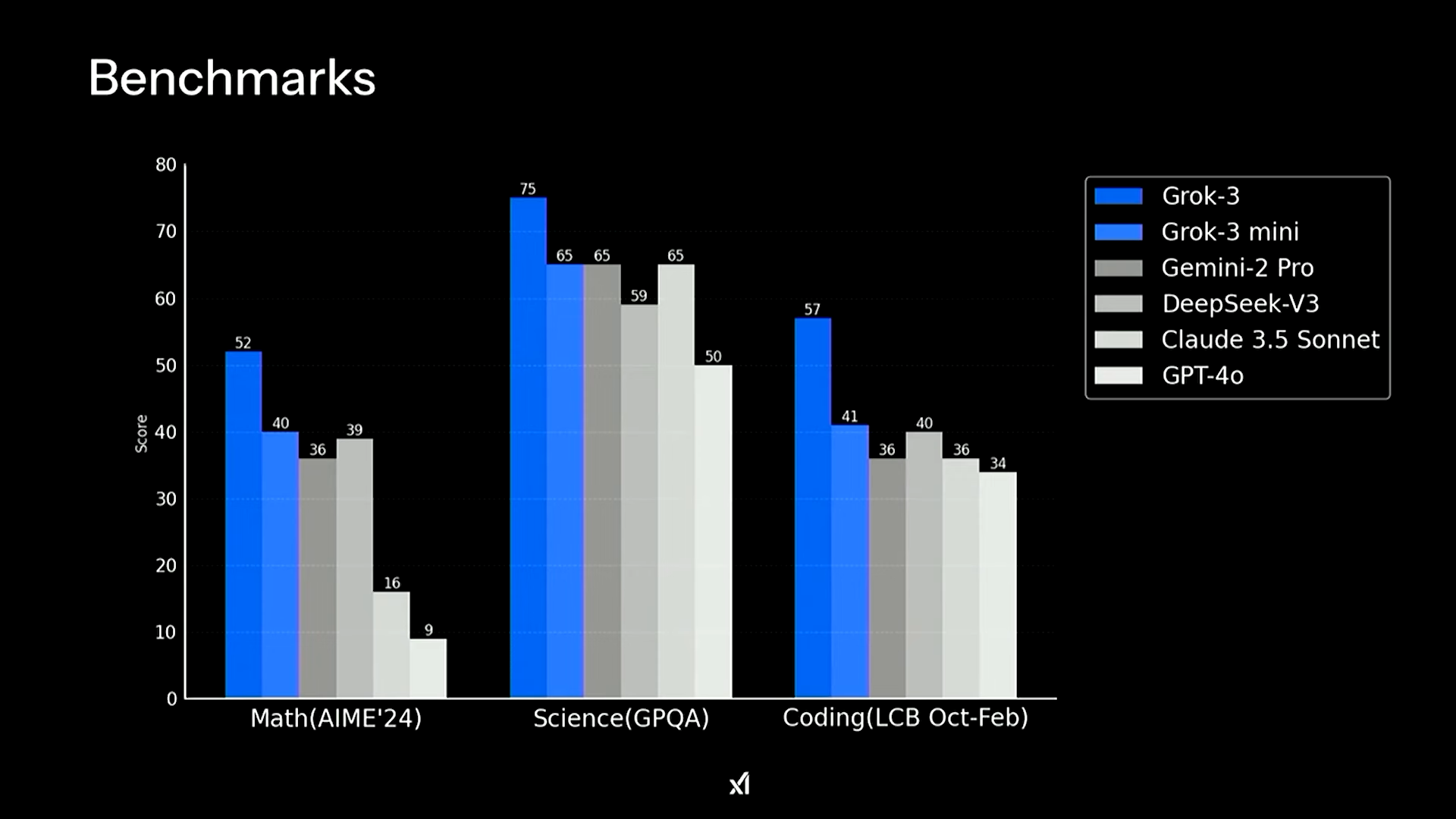
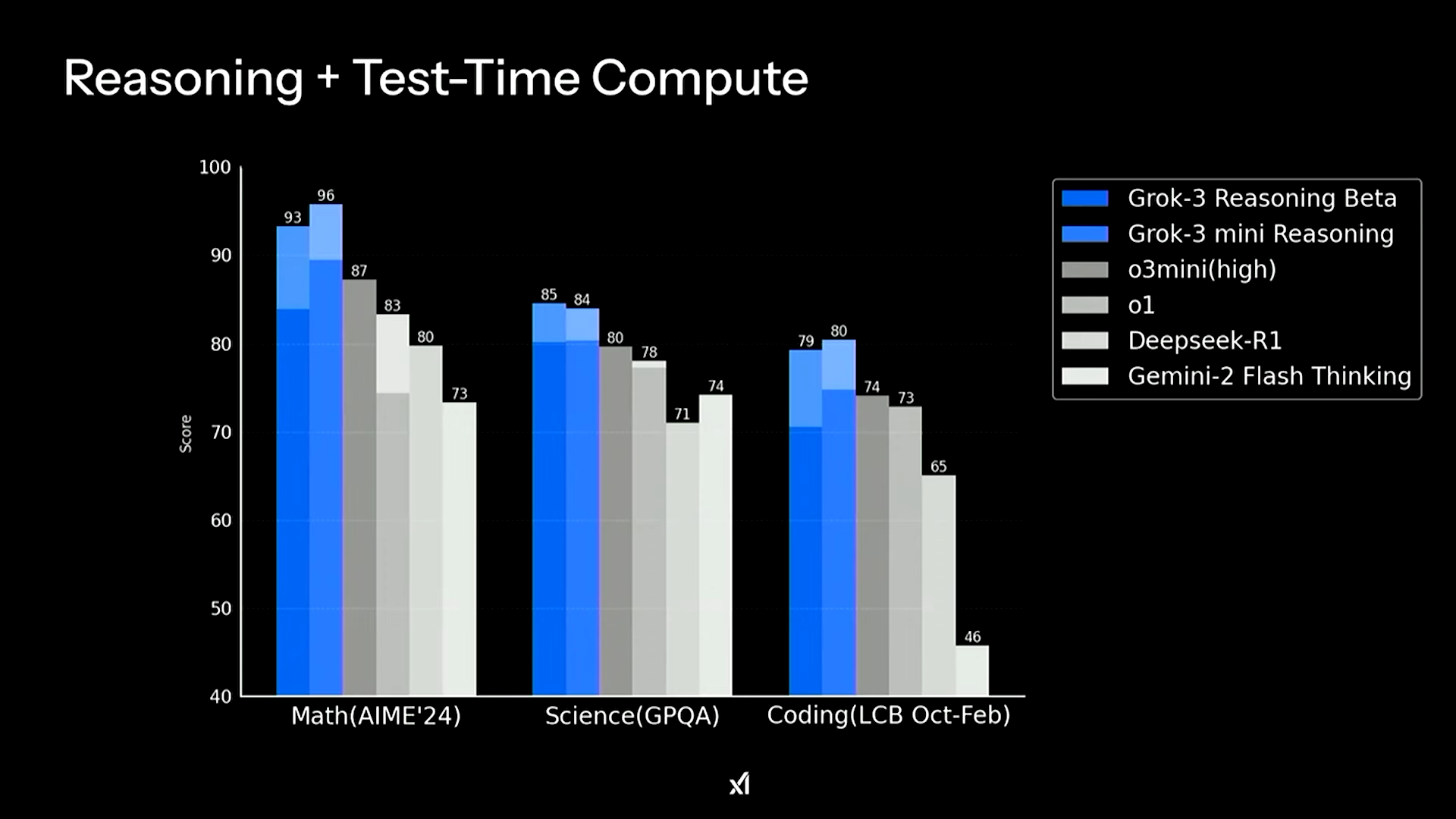
xAI claims that Grok-3 and Grok-3 mini outperform o3 mini (high), o1, Deepseek-R1, and Gemini-2 Flash Thinking on Math (AIME'24), Science (GPQA), and Coding (LCB Oct-Feb) benchmarks.
Image Generation
Grok now uses xAI's own Aurora image generation model, which excels at generating photorealistic images. It's particularly strong at rendering human subjects and real-world objects. What sets it apart is its permissive approach to sensitive content - Aurora allows users to generate images of celebrities, politicians, and branded logos, a policy that has sparked some controversy.
Demo: Keanu Reeves holding up a piece of paper with text

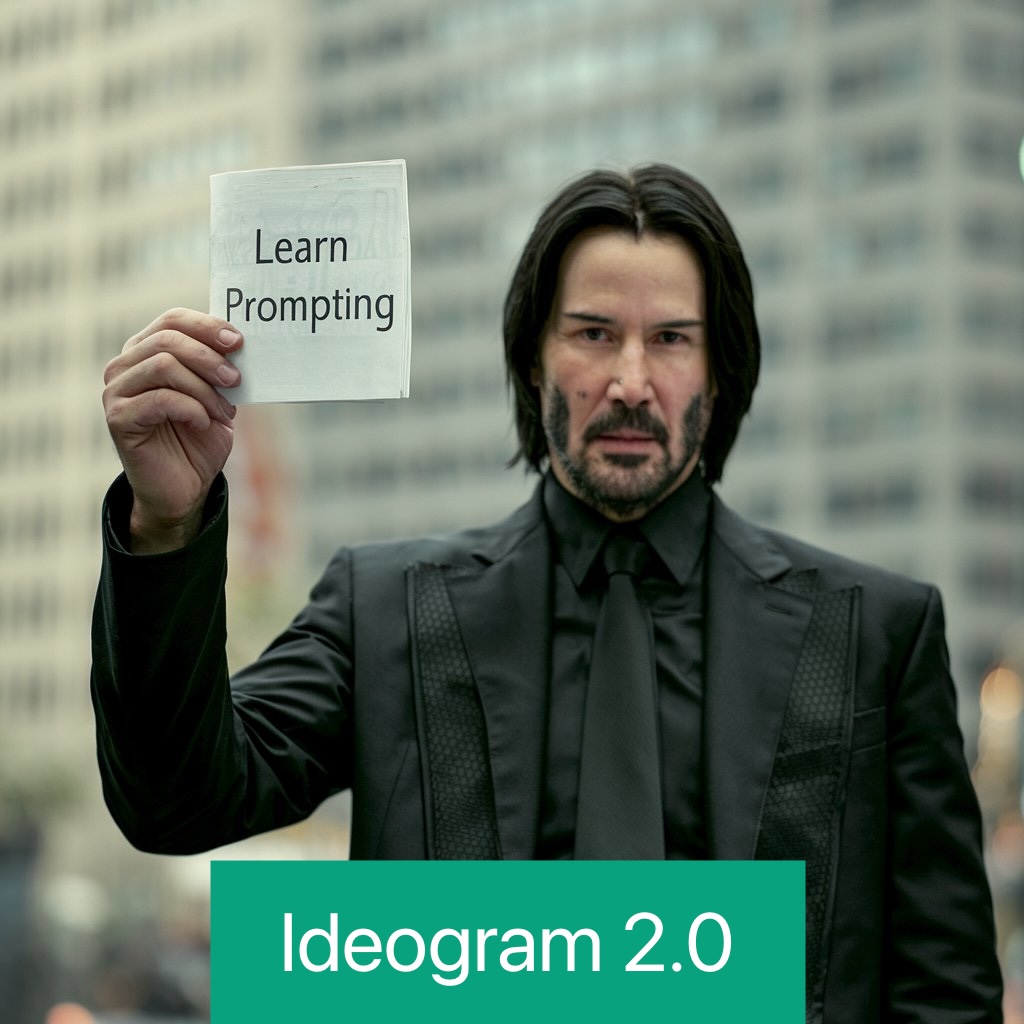
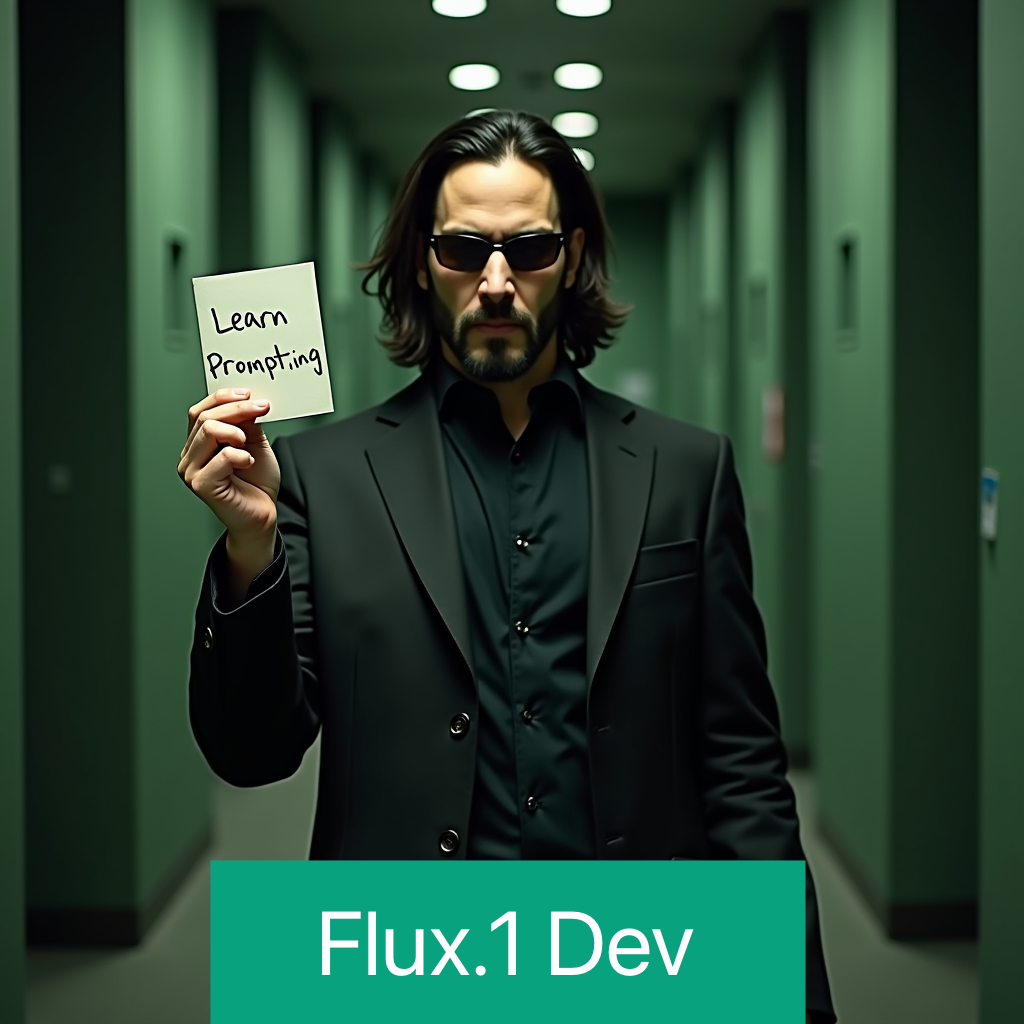
Prompt
Grok 3's version was the clear winner in our test. The image is remarkably realistic, and both the style and age of Keanu matched the movie far better than results from Ideogram 2.0 or Flux.1 Dev. DALL-E refused to generate the image altogether as its policy does not allow creating images of celebrities.
Voice Mode (requires Premium+ or SuperGrok subscription)
Grok 3's voice mode just launched, and early feedback is mixed. Users report that it's patchy, repetitive and far from polished.
One of Grok's standout features is its eight distinct voice personalities:
- Default
- Storyteller
- Romantic
- Unhinged
- Meditation
- Conspiracy
- Not a therapist
- Dr Grok
- Sexy
- Professor
The most infamous is the "unhinged" mode, which lets it swear at you. Some find it hilarious, others just cringe.
It's still early days, and there's plenty of room for improvement. But right now? None of the modes seem to be hitting the mark.
<note> Want to hear for yourself how Grok's Voice Mode compares to ChatGPT? Watch this video by Aivoxy of Grok and ChatGPT talking to each other </note>
Pricing
Grok's paid features are available through a SuperGrok subscription ($30/month or $300/year).
What you get with SuperGrok:
- Guaranteed access to Grok 3
- Additional usage of Grok 3 DeepSearch/Thinking
- Access to Grok Voice Mode
- Early access to new features
Final Thoughts: Is Grok Worth it?
Grok AI is certainly an intriguing contender in the AI chatbot landscape. With its real-time access to X and witty personality, it brings something unique to the table. While it may not yet surpass OpenAI's GPT-4o at deep research, it offers a compelling alternative for users looking for a more open and less restricted AI.
That said, Grok still has some catching up to do. While its image generation is impressive, its voice mode feels underdeveloped. However, with the rapid updates from xAI, Grok is evolving fast, already crushing maths, science, and coding benchmarks.
Ultimately, whether Grok is worth it depends on what you want from an AI assistant. If you're after an uncensored, real-time AI with decent research abilities, it might be worth a try, especially since it offers free limited access to its core features.
Will Grok challenge the dominance of OpenAI, Anthropic, and Google? Only time will tell, but it's certainly one to watch.
Kevin Law
Kevin Law is an English Second Language teacher with a passion for Generative AI, particularly in creating personalised and engaging learning experiences. With expertise in integrating AI tools into education, Kevin bridges the gap between traditional teaching methods and innovative technologies to enhance student outcomes. He is committed to making learning more accessible and effective for diverse learners worldwide.
